In the development of the furniture industry today, custom furniture can be said to have completely entered the market of mass consumers. However, for high-end consumers, custom furniture can satisfy their personal display of furniture, but they are not satisfied with intelligence; and with the continuous improvement of life and technology, the safety, comfort and efficiency of the home environment. Sexual requirements are also getting higher and higher.
Smart furniture is based on modern fashion furniture. It combines intelligence, electronic intelligence, mechanical intelligence and IoT intelligence into the furniture products to make the furniture intelligent, international and fashionable, making home life more convenient and comfortable. It is an important part of the upstart lifestyle and is the development trend and trend of future international furniture.
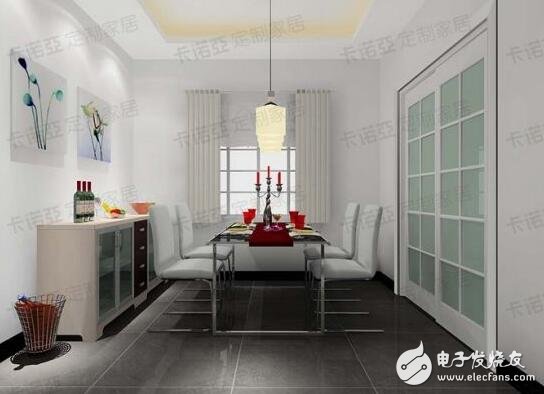
The word "customized" is said to be different from the same kind of gas field. From the "tailoring" of the home environment, the custom wind is gradually emerging, and the subtext behind it is consumption upgrade and personality return.
But ten years ago, the finished furniture market was in the ascendant, and the company where Chen Jianqing was located had another way to make custom furniture. Chen Jianqing said that at that time, the whole industry had not yet customized this name. "We are so too different, and in the end we are still lacking confidence and confidence."
Today, custom furniture is being favored by more and more consumers, and more and more companies in the industry are involved in optimistic about their market, but it is not easy to get a piece of it.
1. Behind the support of intelligent manufacturing
Chen Jianqing is the deputy general manager of Foshan Kefanzhi Home Furnishings Co., Ltd. He told the First Financial Reporter that the company was founded in 2006 and received the first order from the store three months later.
"At that time, unlike the mature software and hardware systems, I now clearly remember that the first order was still hand-painted, with the size and color marked on it. And, although our production line was able to produce non-standard parts at the time. However, it is impossible to mass production." Chen Jianqing said.
As demand increased, Covan had to improve production equipment. In terms of hardware, from the initial use of domestic equipment to the import of advanced production lines in Germany. In terms of software, the company began to carry out information transformation after three years of establishment, and continuously improved the intelligence of the factory. Now, Covan has solved the contradiction between individualization and mass production, and realized highly flexible production with German CNC digital manufacturing equipment and self-developed system integration control center.
During this period, Covan took a certain percentage of sales from each year according to different market needs, specifically to improve production. Chen Jianqing believes that to be customized, it must have the corresponding production capacity to protect. "The larger the order quantity, the higher the pursuit on the equipment. When there are 10,000 orders per day, it is natural to have software to control. ".
Different from the creation of Covan Company, Foshan Zhongzhixin Furniture Co., Ltd. has been doing finished furniture for nearly 20 years, and officially launched customized products in 2016. The strategy adopted by Zhongzhixin Company is one step in place. Guan Jinshan, director of the company's wardrobe business unit, told the First Financial Reporter that in order to develop in the customized sector, the company's investment is very large.
“We have specially acquired the land in Anhui, built a large industrial base of more than 420,000 square meters, and introduced the world's top production equipment and technology such as Italian SCM and German Haomai. Only equipment and workshops invested about 1.1 billion yuan. "He said.
In fact, all the furniture companies in the industry that have already achieved mass customization are inseparable from the support of smart manufacturing. Overall, flexible production consists of five steps, data generation and stock preparation, sawing and cutting, length and edge banding, drilling and hardware installation, and assembly and packaging.
When designers use design software to make many different designs for consumers, production data has been formed in the system. When these designs are passed to the factory, the order management system will collect orders from all over the world and then put the same Products of the same type such as color and thickness are put into a database, that is, "unpacking", and then batch production according to the amount of production.
At present, leading enterprises such as Shangpin Home Furnishing and Sophia have been able to produce more than 300,000 non-standard parts per day, and the production efficiency is 8~10 times that of the traditional model.
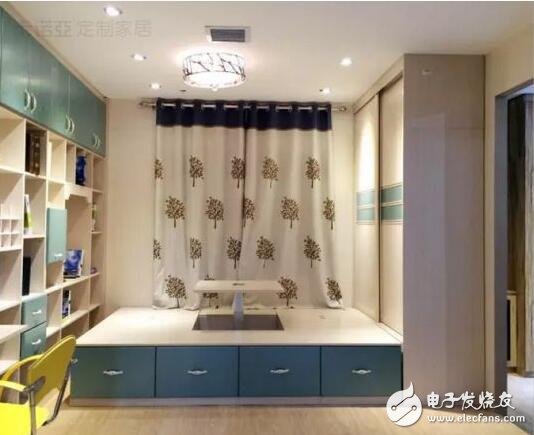
2, from a hammer to the full chain service
In Chen Jianqing's view, it is far from enough to achieve flexible production. The business model and thinking management mode of customized furniture are completely different from the finished furniture. This is both difficult and key to making customized furniture. Chen Jianqing said that the traditional business model is relatively simple, that is, the buying and selling relationship - customers can buy directly when they choose to shop. Production is also relatively simple, mass production, the pursuit of speed, and then sell after production. But customization is the reverse, and someone buys it before it is produced.
In general, the entire process of custom furniture includes the following steps: First, the store guides to contact customers, understand the needs, and then the designer's door-to-door size, combined with professional knowledge to design, customer confirmation, order, enterprise production, home delivery, Installation, and finally the ongoing tracking service.
Guan Jinshan also has a deep understanding of this. “Customized furniture chains are more cyclical and more complex. For example, customizing a wardrobe, there can be no mistakes in any part of a series of links, otherwise the cabinet may not be installed in your home, or the missing parts are missing. In this way, the coherence requirements for the company system are very high."
In addition, systematic training of agents and designers is also a very important part of the construction of the manufacturer system, including thinking mode, concept, corresponding professional knowledge, system operation and so on.
This is also the reason why custom furniture has achieved mass production and the cost is still high – in the case of gradual convergence of manufacturing costs, labor costs and service costs are significantly higher than finished furniture, plus the custom furniture industry is currently at During the upswing, many companies are still accelerating expansion, building new factories, expanding channels, and building databases.
3. The market scale increased to 300 billion yuan this year.
As an important part of the supply-side reform of the manufacturing industry, enterprises are encouraged to carry out personalized customization and flexible production, which has been written into the 2016 government work report. With technological transformation and equipment renewal, large-scale personalized customization can not only meet the consumption upgrade, but also let the enterprise taste the sweetness of the new business model.
In the first half of this year, Shangpin House (300616.SZ), Piano (002853.SZ), Ou Pai Home (603833.SH), Gold Kitchen Cabinet (603180.SH), My Le Home (603326.SH), Chi State-owned shares (603801.SH), six custom-made companies have been listed, plus Sophia (002572.SZ), Haolaike (603898.SH), Dingguji (833958.OC), and the end of June. The company has been acquired by Del Future (002631.SZ) and currently has 10 custom-made furniture listed companies.
According to the semi-annual report data of some enterprises that have been disclosed, the net profit growth rate of Hao Laike and Bai Desheng exceeds 50%; the growth rate of net profit of Piano, Shangpin Home Furnishing and Gold Kitchen Cabinet exceeds 100%. From August 11th to 14th, the 38th International Famous Furniture (Dongguan) Exhibition and China (Dongguan) International Customized Home Exhibition were held. Many companies and industry insiders interviewed by the First Financial Reporter said that they refer to more than 70% of foreign countries. The custom furniture penetration rate, China's custom furniture market capacity is huge.
According to the “2017 China Building Materials and Home Industry Report†released by Yiou Think Tank, the proportion of custom furniture market share in the overall market of furniture has reached 35% in 2016 (multi-category furniture such as cabinets reach 15%, cabinets, wardrobes, wooden doors, etc.) 20% of single-category furniture, combined with the judgment of the size of the market in the financial reports of various home-listed companies, the size of the customized furniture market will grow to 324.1 billion yuan in 2017.
At the first China Household Manufacturing Conference held on the 10th, Gao Yanmin, Director of the Consumer Products Industry Department of the Ministry of Industry and Information Technology of China, said that customized production is shaping the image of “Made in China†and boosting consumers’ confidence in “Made in Chinaâ€. And promoting and promoting the new model and new features of the home industry have important guiding functions.
In the context of the thriving custom furniture market, many companies have already slogan "customized house". However, a number of corporate leaders also told the First Financial Reporter that the current "full house customization" refers more to the furniture level.
Zhongzhixin has been able to integrate finished furniture into custom, that is, in addition to wardrobes, cabinets, TV cabinets, bedside tables, dining tables, etc., it also includes some soft parts such as sofas, beds and mattresses, reaching the same color and the same style.
OOD (European), which also started as a finished furniture, goes one step further. It is different from the custom products that mainly use triamine plates and plastic plates. OOD incorporates piano paint, solid wood, logs, marble and aluminum. Alloys, a variety of craft glass, leather, etc., to avoid mismatching problems.
Chen Haoran, founder and president of OOD brand, said in an interview with the first financial reporter that if the material is too single, it will lead to the homogenization of the design scheme, which limits the choice of consumers. In the end, it is still impossible to "what the guest wants." .
Chen Jianqing said that whether it is a whole house customization or a big home, it is essentially a process of industrial chain integration. "Now we are not just looking at the custom furniture industry. What's more, it's even harder to come together with more than a dozen categories. I think it will take at least five years for the whole house to be customized."
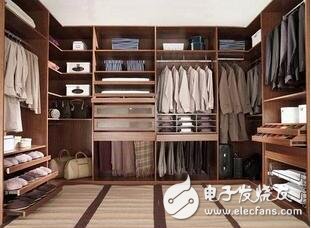
The home furnishing industry is no exception. From the aspects of management, design and development, manufacturing, marketing and other content, we will realize the intelligent management and operation of all parts. The use of information management tools, automated production lines, rapid response, and rapid data transmission and sharing.
Characteristics of the home industry in the era of new intelligent manufacturing
1. Whole house customization has become the focus.
The word "custom" originated in Savile Row, meaning tailored to individual customers [2]. Customization was first in the category of luxury clothing and jewellery luxury. In recent years, the concept of "customization" has quietly emerged in the home furnishing industry. Wardrobes and cabinets have once become the most favored custom furniture. With the upgrade of consumption, the customized home market has also developed, which has spawned a huge custom furniture market, and many mass consumers have also begun to choose “privately customize their own homeâ€.
Whole house customization includes cabinet customization, wardrobe customization, furniture customization, office customization, bathroom customization, soft-packing customization and hard-packing customization. Through the upstream and downstream, integration of manufacturers, design, home improvement, soft furnishings, real estate and other industrial chain areas, Linking to consumers, producers, buyers, sellers, designers and other groups.
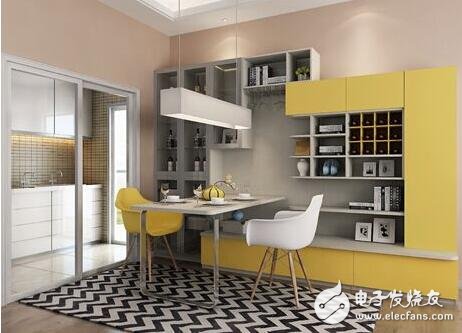
2. Home furnishing companies are actively seeking ways to transform and upgrade.
Under the current economic situation, rising raw material prices, higher labor costs, and higher logistics and transportation prices have caused the cost of the home furnishing industry to remain high, regardless of whether large and medium-sized enterprises are in a difficult period. More powerful enterprises are striving to find a path of transformation and upgrading, shifting production and manufacturing bases, improving product automation production level, accelerating product cycle, and building brand influence... Therefore, digital R&D design, numerical control of manufacturing equipment, and manufacturing process Intelligent control, electronic information technology embedded products, corporate brand upgrades, management upgrades and other content are increasingly being concerned and adopted by enterprises. It is extremely urgent for enterprises to enhance the integration of industrialization and informationization.
Improve the production system through intelligent cooperation with intelligent equipment and information systems, reduce problems such as production errors and missing parts, improve equipment performance and production efficiency, and at the same time make production progress more visible and communication convenient, and finally achieve destocking and shrinking. The overall goal of quality, quality assurance, cost reduction and efficiency.
1 full range of intelligent upgrades.
For a strong company, the comprehensive intelligent transformation of the factory is a necessary trend in the future. Intelligent, informative, and refined manufacturing can achieve the perfect integration of personalization and industrialization. Intelligent upgrades will bring advanced flexible production lines, high sheet utilization, high automation, reduced labor costs, improved supply chain efficiency, and freed labor-intensive traditional production methods.
2 part of the important process optimization transformation mode.
For most home furnishing companies in China, enterprises cannot invest huge amounts of money in intelligent upgrades at one time, but more and more entrepreneurs are aware of the importance of upgrading. Therefore, process design and equipment improvement from some important sections are updated. And the corresponding information transformation has become an important means to enhance the flexible manufacturing of enterprises.
The platform reflects the development direction of the entire home furnishing industry from low-end manufacturing to smart manufacturing.
Antenk PLCC connectors Series Sockets are low profile, thin wall sockets designed to convert plastic leaded chips to a thru-hole PCB format on a .100" centerline grid.Antenk's superior precision stamped contact design provides consistent, high retention contacts for all size chips.

PLCC Connectors -PLCCSockets
A PLCC socket is a component that connects a chip carrier to an electronic circuit via surface-mounting or through-hole technology.
Plastic leaded chip carriers (PLCCs) are used in surface-mount technology where electronic circuits are produced, and components need to be mounted or placed directly onto a printed circuit board (PCB). The chip carrier is placed in a PLCC socket, which is either surface-mounted or features through-hole technology. A specialised tool called a PLCC extractor is needed to remove the chip carrier from the PLCC socket.
What are PLCC sockets used for?
PLCC sockets are used in surface-mount device (SMD) and surface-mount technology (SMT) applications. PLCC sockets made of heavy gauge copper alloy are compatible in high shock / high vibration applications. PLCC sockets made of rolled-leaf copper are useful in low-cost computer applications.
Types of PLCC sockets
The two primary categories of PLCC sockets are:
Surface-mount PLCC sockets, which are used in devices sensitive to heat from the reflow process. These allow for component replacement without redesigning or reworking the entire PCB.
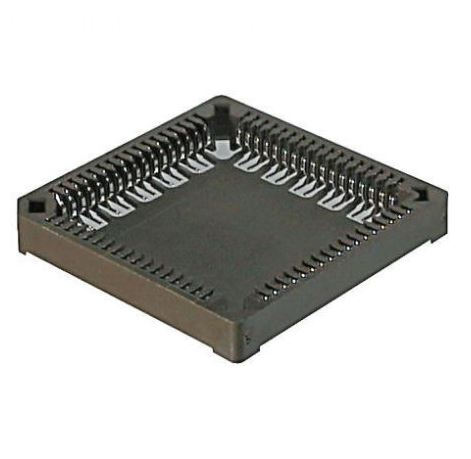
Through-hole technology PLCC sockets are necessary when a device requires stand-alone programming with flash drives or memory devices. These are also beneficial for prototyping activities where wire wrapping is required.
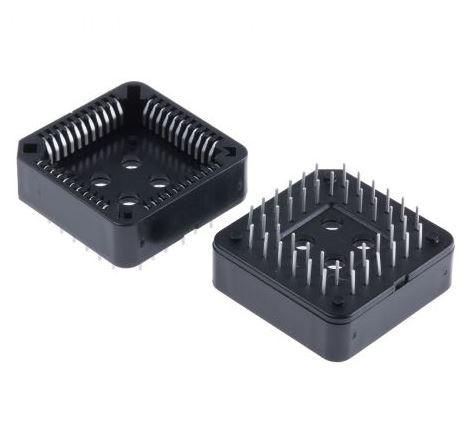
Plcc Socket,Plcc Connector,Plcc Socket Connector,Smd Plcc Connector,PLCC Connector DIP,PLCC Connector SMT
ShenZhen Antenk Electronics Co,Ltd , https://www.antenkwire.com